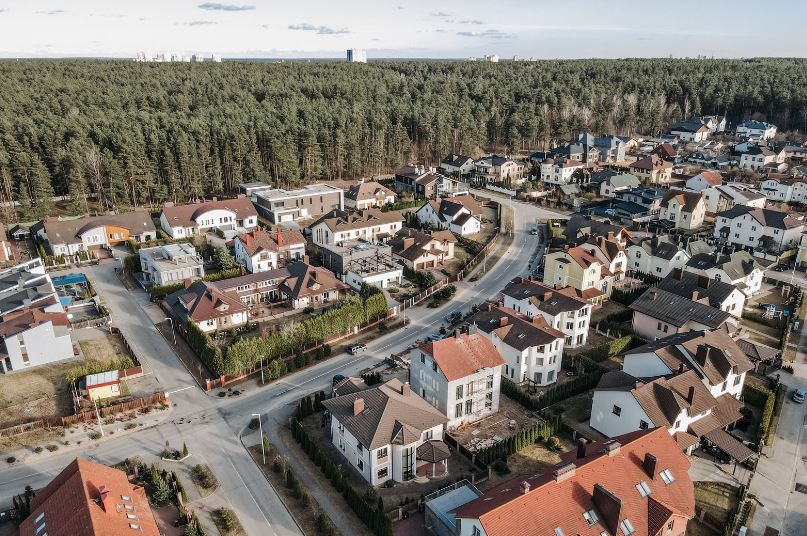Choosing the right neighborhood to find the best fit for your lifestyle and needs is a multi-faceted process that involves careful consideration of various factors, from practical necessities to personal preferences. It’s essential to evaluate your priorities, which can range from proximity to work, quality of local schools, availability of amenities, safety, and the overall vibe of the community. This process starts with introspection and research, helping you narrow down your options and make an informed decision that aligns with your unique lifestyle and future plans.
First and foremost, consider the location relative to your daily commute and regular activities. Proximity to your workplace can significantly impact your quality of life, as shorter commutes reduce stress and free up more time for personal pursuits. Additionally, consider the neighborhood’s access to public transportation if you prefer or rely on it. Evaluate the availability of major highways, airports, and other transportation hubs if travel is a frequent part of your life.
The next crucial factor is the cost of living, which encompasses housing prices or rental rates, property taxes, and general expenses for groceries, utilities, and other necessities. Researching these costs in different neighborhoods can help you determine what fits within your budget. Use online tools and real estate websites to compare prices and get a sense of what you can afford in each area. It’s also helpful to consider future financial stability; areas with appreciating property values can be a good investment, even if they require a higher initial outlay.
Safety is another paramount consideration. Look into crime rates in the neighborhoods you’re considering. Many local government websites, police departments, and independent organizations provide crime statistics. Websites like NeighborhoodScout or CrimeReports offer detailed insights into the safety of different areas. Also, consider visiting the neighborhood at various times of the day to get a sense of its safety and the behavior of its residents.
Educational opportunities are vital for families or individuals planning to have children. Research the quality of local schools, which often influences property values. Websites like GreatSchools.org provide ratings and reviews for schools, helping you gauge their performance. Additionally, consider the availability of extracurricular activities, parks, and community centers that contribute to a well-rounded upbringing for children.
Access to amenities plays a significant role in your daily convenience and enjoyment. Consider the availability of grocery stores, healthcare facilities, restaurants, cafes, and shopping centers. Evaluate the presence of parks, gyms, recreational facilities, and cultural institutions like museums and theaters. A neighborhood with diverse amenities can enrich your lifestyle and provide more opportunities for leisure and social activities.
The neighborhood’s overall vibe and sense of community are equally important. Spend time walking around potential areas, visiting local parks, shops, and cafes, and talking to residents to get a feel for the community. Pay attention to how well the area is maintained, the friendliness of the people, and whether the neighborhood’s pace matches your lifestyle—whether it’s vibrant and bustling or quiet and serene. Attend community events or local gatherings to get a firsthand experience of the community spirit.
Public services and infrastructure also play a critical role in determining a neighborhood’s suitability. Evaluate the quality of services such as trash collection, street cleaning, and public maintenance. Check for the presence and condition of public facilities like libraries, community centers, and sports complexes. Good infrastructure, including well-maintained roads and reliable public utilities, can significantly impact your daily life.
Consider future developments and zoning laws that could affect the neighborhood. Research any planned projects that might change the character of the area, such as new commercial developments, highways, or public transportation routes. While some developments can enhance a neighborhood, others might detract from its appeal. Local planning department websites often provide information on upcoming projects and zoning regulations.
The diversity of the neighborhood can also influence your decision. A diverse community in terms of culture, age, and background can offer a richer living experience, fostering inclusivity and broadening your social interactions. Some people prefer areas with a particular cultural or demographic makeup, so consider what kind of environment you thrive in and feel comfortable with.
Lastly, think about your long-term needs and how the neighborhood can grow with you. Consider how your lifestyle might change in the coming years, such as starting a family, changing jobs, or retiring. Choose a neighborhood that can accommodate these changes, providing stability and continuity in your living environment.
In summary, choosing the right neighborhood is an intricate process that requires balancing numerous factors, including commute, cost of living, safety, education, amenities, community vibe, public services, future developments, diversity, and long-term potential. Taking the time to thoroughly research and visit potential neighborhoods can help ensure that your choice aligns with your current needs and future aspirations, ultimately leading to a more satisfying and enriching living experience.

